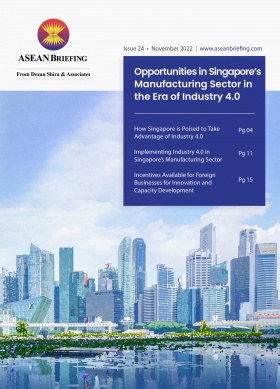Philippines Opens Renewable Energy to Full Foreign Ownership
The Philippines has recently allowed full foreign ownership of renewable energy projects. This includes the exploration, development, and utilization of solar, wind, hydro, and ocean or tidal energy resources.
The Philippines has fully opened its renewable energy sector to foreign ownership, representing a significant shift to the country’s energy policies.
On November 15, 2022, the Philippines’ Department of Energy (DOE) issued Circular No. 2022-11-0034. The circular amended 2008’s Renewable Energy Act to remove stipulations that required Filipino ownership of certain renewable energy resources.
With the change, foreign investors can now hold 100 percent equity in the exploration, development, and utilization of solar, wind, hydro, and ocean or tidal energy resources. The policy change comes as the Philippines seeks to attract foreign investment to boost its renewable energy sector and meet its long-term climate targets.
The DOE issued the policy on November 15, 2022, and it came into effect on December 8, 2022.
Foreign ownership is fully permitted
The circular amends the implementing rules and regulations of the Renewable Energy Act of 2008, formally called the Republic Act No. 9512, to allow full foreign ownership of renewable energy projects. The Renewable Energy Act is a piece of legislation that provides a framework for the development, transmission, and utilization of renewable energy in the Philippines.
Namely, the circular amends Section 19 of the implementing rules and regulations by removing the requirement that the exploration, development, and utilization of solar, wind, hydro, and ocean or tidal energy sources can only be undertaken by Filipino citizens or entities that are at least 60 percent Filipino-owned. That requirement meant that foreign investors could only own up to 40 percent equity in such projects.With foreign investors now able to own 100 percent equity in these projects, those currently operating in a joint venture with a Filipino partner may also now take a controlling stake in such ventures.
Incentivizing foreign investments in renewables
The Philippine government hopes that allowing foreign ownership of renewable energy projects will increase the speed of the Philippines’ transition to renewable energy sources.
According to the Philippines’ National Renewable Energy Program (NREP) 2020-2040, the country aims for renewables to comprise 35 percent of power generation by 2030 and 50 percent by 2040. The government also seeks to lower the costs of renewable energy projects and make renewables more accessible to the public.
Despite these goals, the Philippines’ transition to renewable energy sources is seeing a downward trend. In 2008, renewable energy made up 34 percent of power generation, but in 2021 it made up just 21 percent.
To encourage the development and use of renewable energy, the Philippine government has released an array of incentives and supportive policies. For example, the Renewable Energy Act of 2008 contains numerous incentives for investing in renewable energy, including:
- A seven-year corporate income tax holiday;
- A reduced 10 percent corporate income tax rate upon expiration of the tax holiday;
- Tax exemptions for carbon credits generated from renewable energy sources;
- A 1.5 percent realty tax cap on the original cost of equipment and facilities used to produce renewable energy; and
- Value-added tax exemptions for the purchase, grid connection, and transmission of electricity generated from renewable sources.
Accordingly, foreign investors entering the Philippines’ newly open market for renewable energy can enjoy a variety of incentives. Together, these factors stand to add momentum to the Philippines’ renewable energy transition and pursuit of its climate goals.
The Philippines’ untapped renewable energy potential
The Philippines has an estimated 246,000 megawatts (MW) of untapped renewable energy. It has the world’s third-largest geothermal capacity at 1,900 MW with Indonesia in second and the US on top.
The country’s current mix of renewable energy consists of 4.3 gigawatts (GW) of hydropower, 896 MW from solar energy, and wind 427 MW. The Philippines adopted an ambitious plan to increase the share of renewable energy in the power generation mix to 35 percent by 2030 and 50 percent by 2040.
This involves increasing geothermal capacity by 75 percent, expanding hydropower capacity by 160 percent, increasing wind power capacity to 2,345 MW, and adding an additional 277 MW of biomass power. The Department of Energy estimates the country needs US$120 billion by 2040, presenting ample opportunities for foreign investors.
About Us
ASEAN Briefing is produced by Dezan Shira & Associates. The firm assists foreign investors throughout Asia and maintains offices throughout ASEAN, including in Singapore, Hanoi, Ho Chi Minh City, and Da Nang in Vietnam, Munich, and Essen in Germany, Boston, and Salt Lake City in the United States, Milan, Conegliano, and Udine in Italy, in addition to Jakarta, and Batam in Indonesia. We also have partner firms in Malaysia, Bangladesh, the Philippines, and Thailand as well as our practices in China and India. Please contact us at asia@dezshira.com or visit our website at www.dezshira.com.
- Previous Article A Guide to Taxation in Malaysia
- Next Article An Introduction to Special Economic Zones in Indonesia








